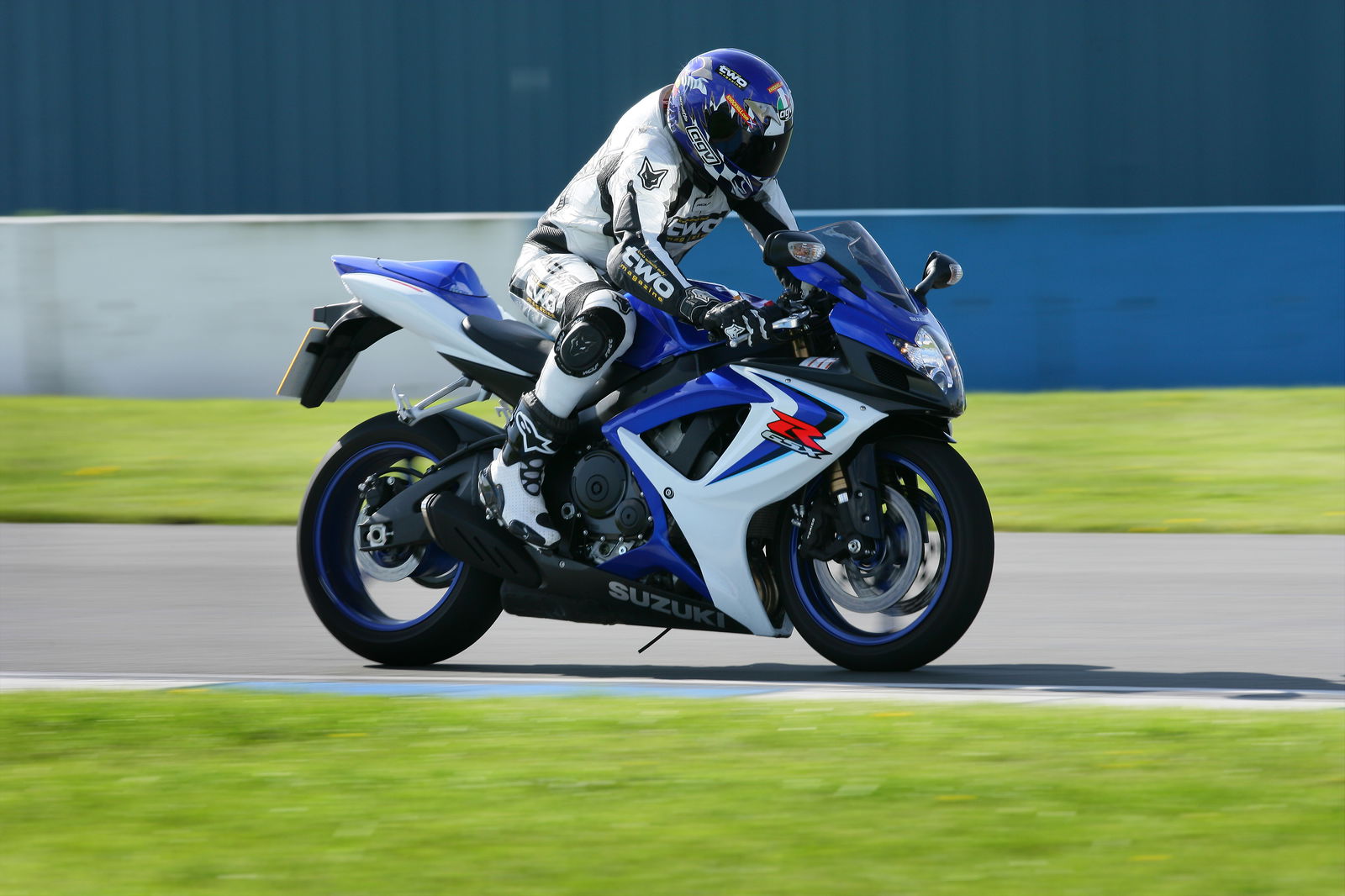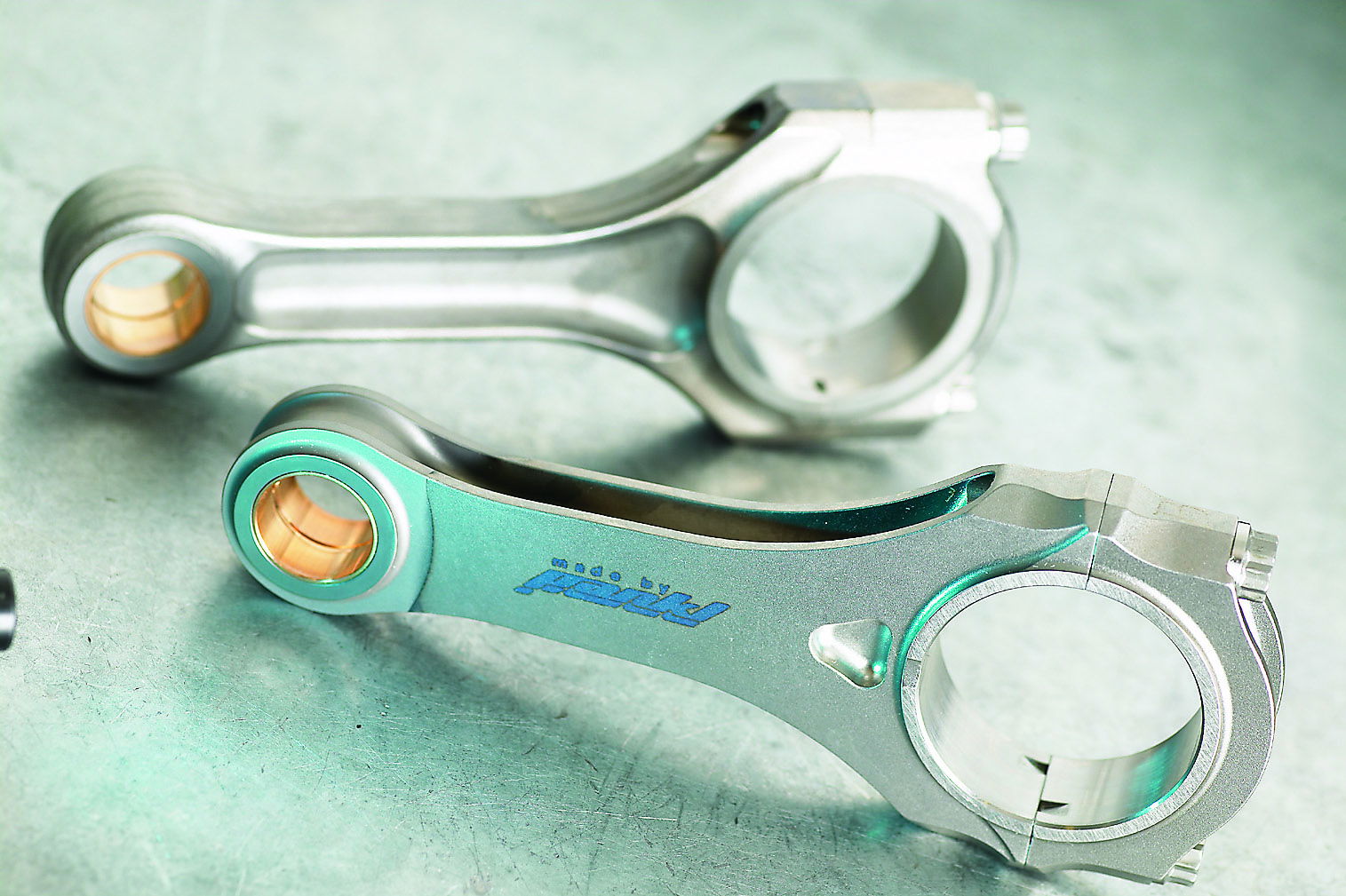Winter Motorcycle Preparation
How to get your motorcycle prepared and ready for the winter weather. Get the grease out!

IF YOU'RE PLANNING on soldiering on through the winter, it's a good idea to make sure your bike is prepared for the worst of the weather.
The first thing to do is to treat your motor to an oil and filter change. It's during the first few minutes of running, when it's cold and the internal frictions are at their most vindictive, that the majority of engine damage occurs. During the winter, when the ambient temperature is low, it follows that your engine is going take longer to warm up, therefore increasing the chance of damage. Good quality oils contain additives to protect the engine during cold starts, but that doesn't mean you can skimp on making sure the motor is up to temperature before thrashing it.
If you own a liquid-cooled bike it's important to check the coolant level and make sure there's antifreeze in the system. If the liquid in the expansion tank or radiator is clear instead of blue or green, the system probably contains very little or no antifreeze.
Most dealers sell-ready mixed coolants which contain all the necessary additives. Draining and re-filling the system on most bikes is fairly simple, but if you do drain it then you must remember to bleed the system when you refill it. If you're not confident about what you're doing, it may be a sensible idea to get your dealer to carry out the fluid change.
Without wanting to sound too pessimistic, winter is a good time to fit some crash protection. Crash bungs and an exhaust protector are a good idea year-round, but when the roads are slimy and your tyres are cold you're more likely to have a low-speed spill. Inexpensive plastic crash protection can save you hundreds of pounds in cosmetic damage.
Speaking of tyres, make sure they're suitable and have plenty of life left in them. Sticky track day rubber won't work as well as road-oriented tyres such as Pirelli Diablos, Bridgestone BT014s or Michelin's Pilot Roads. You'll need plenty of tread remaining so as to disperse water, because stopping distances will increase when it's wet. All tyres have a series of wear indicators or bars. When the tread is level with the bars it's time to change the tyre - but, if you want maximum grip in poor conditions, you may want to replace them before that.
Most motorcycles are finished well enough to see off a few rain showers, but none can fend off the effects of salt corrosion. Even the white powder left as the road surface dries out can eat through the toughest show chrome. There are a number of spray-on protective products around, such as Scottoiler's FS365 Protector, a water-based spray. It washes off easily, though, so you'll have to re-apply it regularly throughout the winter. A light penetrating spray such as Würth Ultra 2040 will work just as well, but remember to keep it well away from the tyres, brake pads and discs. Again, it washes off over time, so you'll need to keep on top of it.
On the parts that are unaffected by engine heat, a liberal smearing of grease will give the best protection. Also apply it to any bare threads such as chain adjusters, gear lever tie rods and wheel spindles. The downside is that road dirt sticks to the grease, making your bike look grotty, but after the winter you can easily rinse it off with a degreasing agent.
��
Handlebar lever joints, especially the adjustable brake and hydraulic clutch levers fitted to many larger bikes, are also prone to seizure. It's a good idea to remove the entire lever, give it a good clean and apply plenty of grease before re-fitting.
Before you wash your hands, it's also worthwhile removing the fairing and panel screws and bolts one at a time and dipping the thread into a pot of alu-grease or copper grease. Boring, yes, but now you've come this far you should also grease the small rubber bungs which the side panel and fairing lugs locate into. Otherwise they can perish, which can cause the plastic lugs to become brittle and snap off.
If you have a Scottoiler or similar automatic chain lubing system, turn up the flow a couple of clicks or so. If you don't have one, then make sure you do it by hand weekly at least. Little and often is the rule, and lube immediately after riding, not before. The lube will then stick to the chain and penetrate its crevices rather than flying off as soon as you pull away.
Batteries suffer hideously during the cold weather, albeit less so than if you just leave the bike untouched in your garage all winter. There are two types of battery - the old-fashioned dry charge ones and the 'maintenance free' sealed-for-life type. Dry charge batteries have screw tops or plugs through which you add distilled water if the fluid level drops. Sealed batteries are, as their name suggests, not designed to be opened or maintained. So don't even try it.
If you've hooked up accessories such as heated clothing or an alarm, the battery should last for about three to four years before you have to replace it. Using a good quality charger such as an Optimate will help to keep it in good order. You can help things along by checking the terminals are tight and giving them a shot of grease. It's also helpful to unplug all the connector blocks you can get your hands on and spray silicone grease (free-flowing initially, then it solidifies) inside. This will stop your electrics shorting out if salty water gets in.
For your own comfort, consider buying heated grips. Have a look at our illustration above to get an idea of how to fit them. Generally you start by removing the handlebar end weights, then removing the old grips. Often the easiest way is to split them open with a Stanley knife and peel them off.
The inside diameters of the two new grips will be different. The larger diameter grip is for the throttle side, to fit over the throttle tube. Offer up the new grip alongside the throttle tube and decide where the wiring will need to be positioned so it doesn't foul on anything when the throttle is twisted open. Then stick the grip in place.
Some kits contain a special grip glue or a tube of superglue. You will only need to apply a small amount to the first third or so of the throttle tube. Make sure you don't let any run to the very end of the twistgrip tube and drip off, or the tube can stick to the bar.
As soon as you've applied the glue, slide the grip over the tube, remembering where the wiring needs to be positioned. Get this done pretty swiftly, before the glue dries. Butt the new grip nearly all the way up to the switchgear and cable housing, but leave a small gap to keep the throttle free. Repeat on the left bar.
Next, neatly cable-tie the loose wiring along the handlebars, again making sure you don't foul anything or interfere with the steering. Now decide where to put the control switch, and whether you want to wire the grips into a switched live (can be tricky) or a permanent feed direct to the battery. The latter is easier, but it means you have to manually turn the grips off when the ignition is off or you'll flatten the battery overnight.
Finally, route the wiring under the tank and around the headstock, taking care not to run it near any engine parts that will get hot while it's running.
1 If your bike has an alarm fitted then a battery charger/conditioner is essential. If your garage has a power supply, hooking it up when parked overnight is a good idea, otherwise regular charging through the cold months should keep things fresh.
2 Würth's battery terminal spray will keep your connections from furring up with salt corrosion. Vaseline does a good job too, although it can look a bit suspect in your toolbox.
3 Spray silicone grease into electrical connectors and on rubber parts such as push-fit fairing bungs. It prolongs the life of the rubber and keeps things easily get off and on-able.
4 Put grease on any moving parts such as the clutch cable (if your bike has one) and also smear some on the lever joints. You don't have to use red grease, we just thought it looked good.
5 While you're at it, grease up exposed threads such as wheel spindles and chain adjusters to keep corrosion at bay. You'll need to clean it off and re-grease if you undo them.
6 Check the coolant to make sure there's antifreeze in there, or it could freeze up solid on an icy night. If the fluid is dark green or blue, it should be okay. If not, change it pronto.
7 Finally, heated grips. Cut the old ones off and remove those horizontal ridges on the throttle tube. Make sure the wiring isn't going to interfere with throttle play.
8 This is the tricky part. Apply glue sparingly, then push the grip into place. It won't be easy and you''ll have to be quick or the glue will set before the grip's fully on.
9 Hopefully your final efforts will look something like this beautifully fitted item. Before you go any further make sure the wiring doesn't foul the throttle or steering.
10 The controls usualy mount on the left-hand bar. If the grips are wired direct to the battery you must turn them off manually or they'll flatten the battery when the bike is left standing. That red LED warns you they're on, but it's easily missed on cold, dark nights.
��
Sponsored By

Britain's No.1 Specialist Tools and Machinery Superstores
When it comes to buying tools and machinery, you need to know you're buying from specialists who know what they're talking about.
Machine Mart eat, sleep and breathe tools and machinery, and are constantly updating their range to give you the very best choice and value for money - all backed by expert advice from their friendly and knowledgeable staff. With superstores nationwide, a dedicated mail order department and a 24 hour website offering quality branded items at fiercely competitive prices, they should be your first choice for quality tools and equipment.

